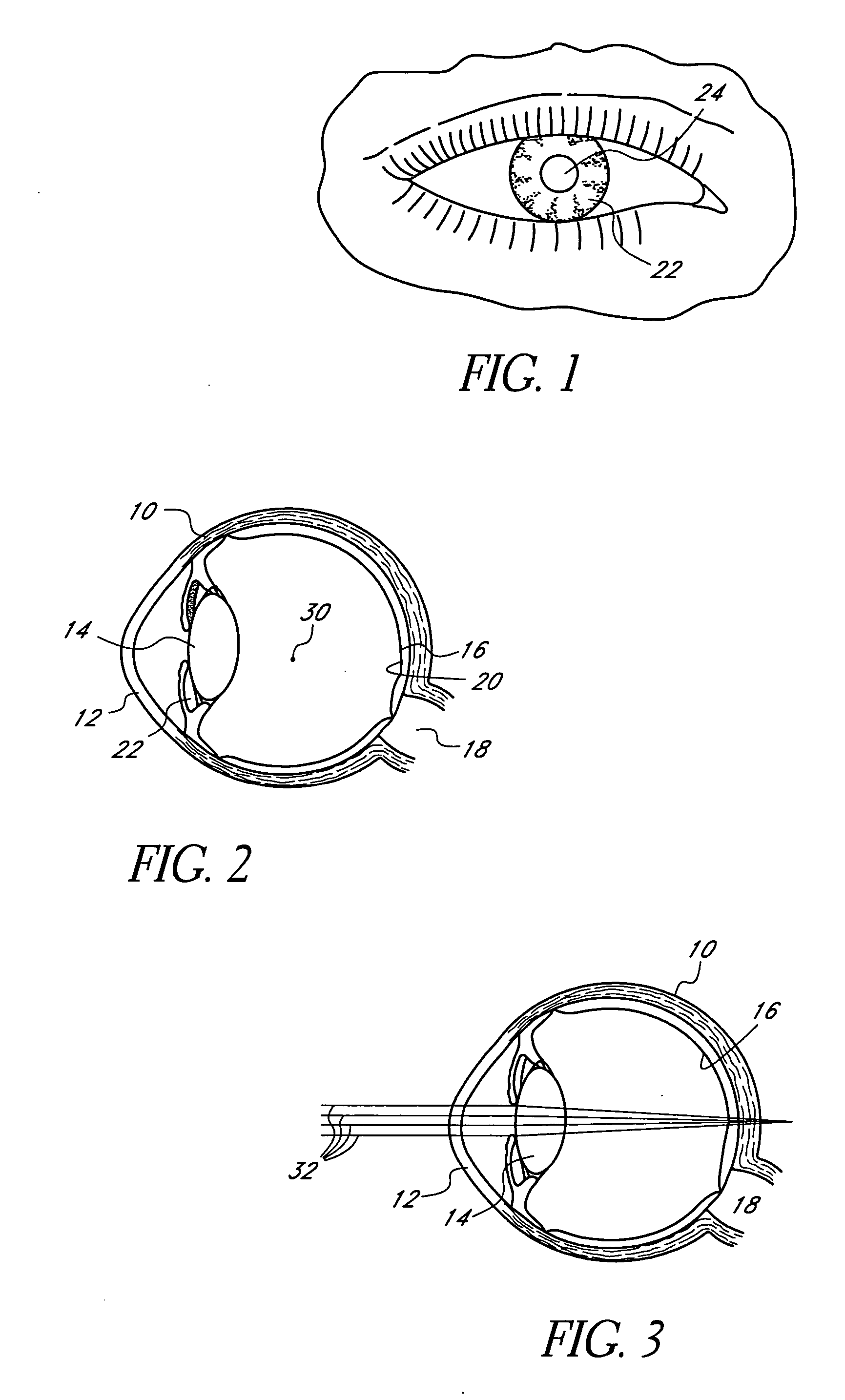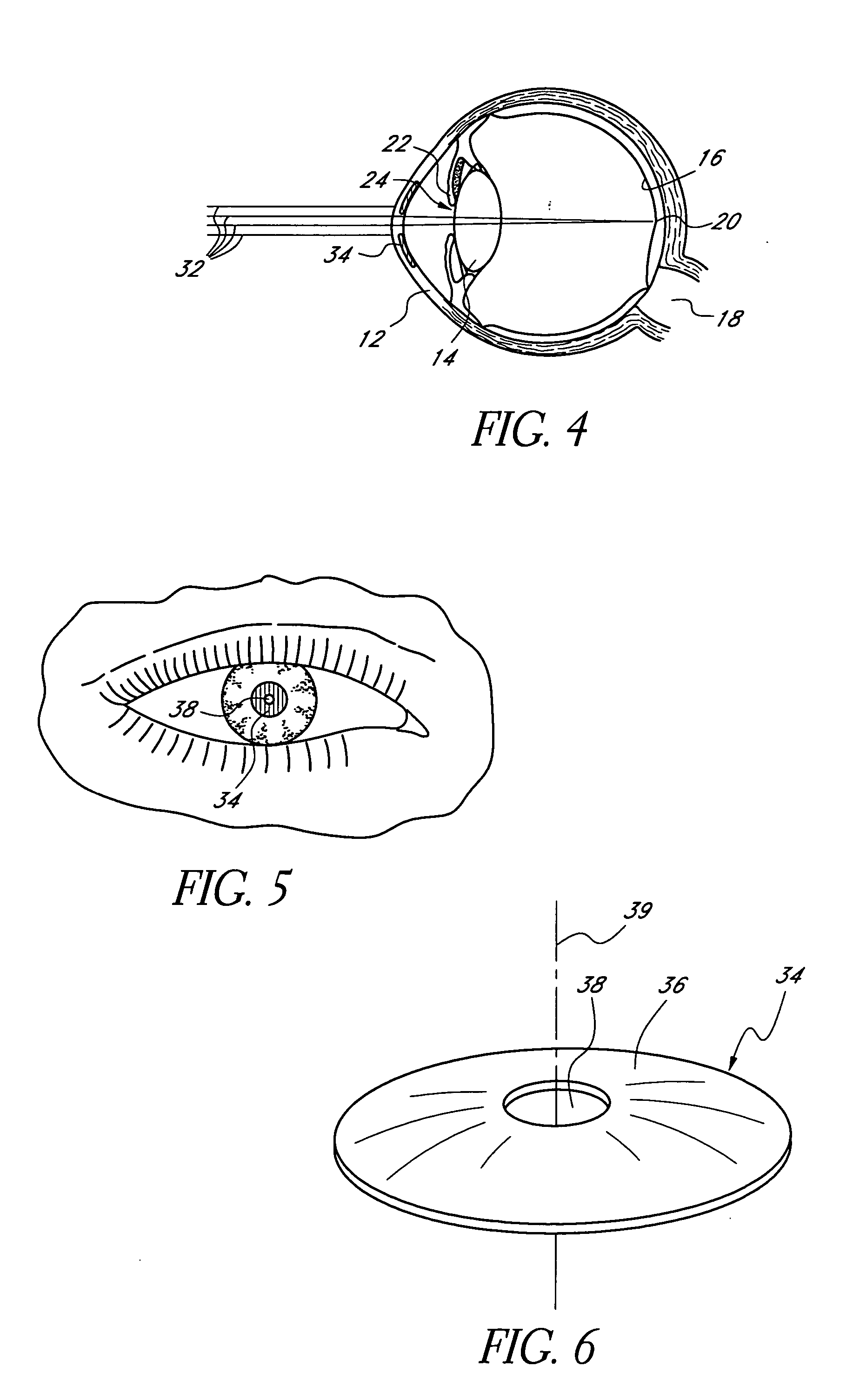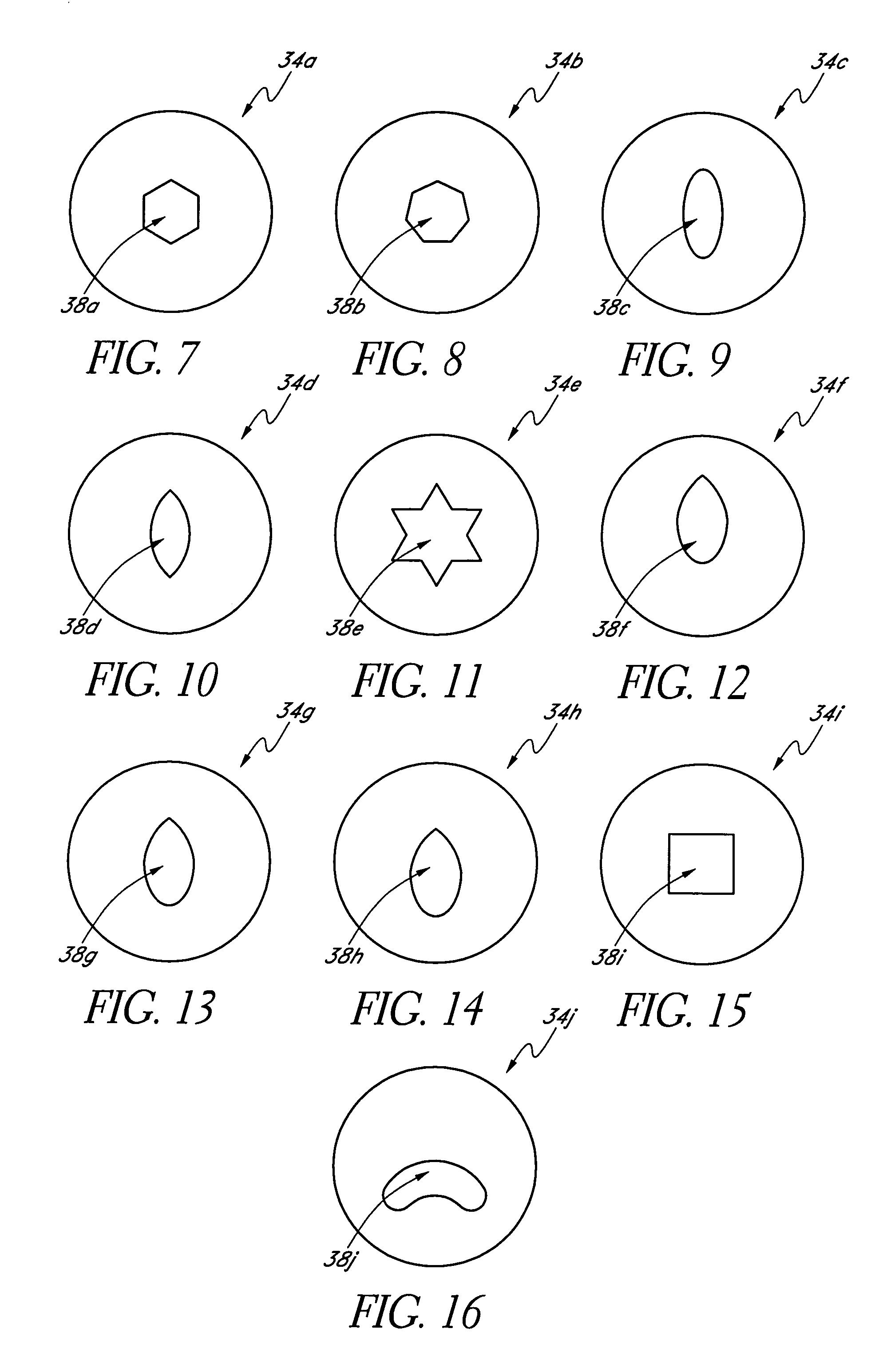Method of making an ocular implant
- Summary
- Abstract
- Description
- Claims
- Application Information
AI Technical Summary
Benefits of technology
Problems solved by technology
Method used
Image
Examples
Embodiment Construction
[0100] This application is directed to masks for improving the depth of focus of an eye of a patient using pin-hole imaging and methods and apparatuses for making such masks. The masks may be applied to the eye in any manner and in any location, e.g., as an implant in the cornea (sometimes referred to as a “corneal inlay”). As discussed further below, some methods for making such masks employ techniques that deposit thin films of material. The materials used to make the mask can be metals that are selected or configured for long-term or permanent implantation. Some metals are subject to processes, such as corrosion, that can degrade a mask over time. As discussed further below, the mask can be formed of a material that is stable, e.g., one that is not subject to such processes or that substantially resists such processes. In some embodiments, the mask is formed of a material that is selected or configured to be inert, e.g., to not degrade due to physical or chemical processes such a...
PUM
| Property | Measurement | Unit |
|---|---|---|
| Density | aaaaa | aaaaa |
| Depth | aaaaa | aaaaa |
| Elasticity | aaaaa | aaaaa |
Abstract
Description
Claims
Application Information
 Login to View More
Login to View More - R&D
- Intellectual Property
- Life Sciences
- Materials
- Tech Scout
- Unparalleled Data Quality
- Higher Quality Content
- 60% Fewer Hallucinations
Browse by: Latest US Patents, China's latest patents, Technical Efficacy Thesaurus, Application Domain, Technology Topic, Popular Technical Reports.
© 2025 PatSnap. All rights reserved.Legal|Privacy policy|Modern Slavery Act Transparency Statement|Sitemap|About US| Contact US: help@patsnap.com



